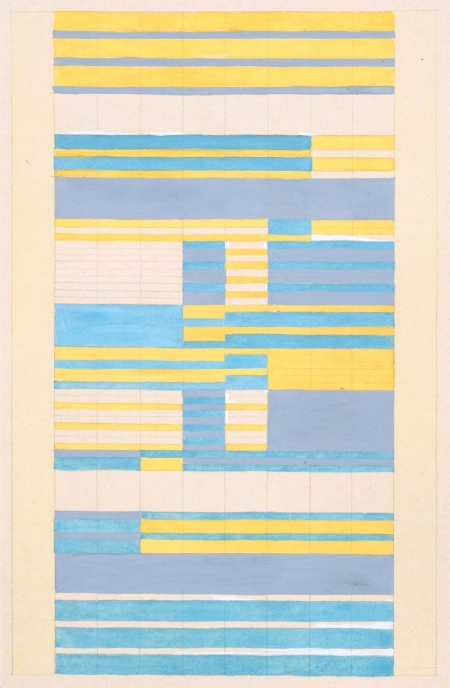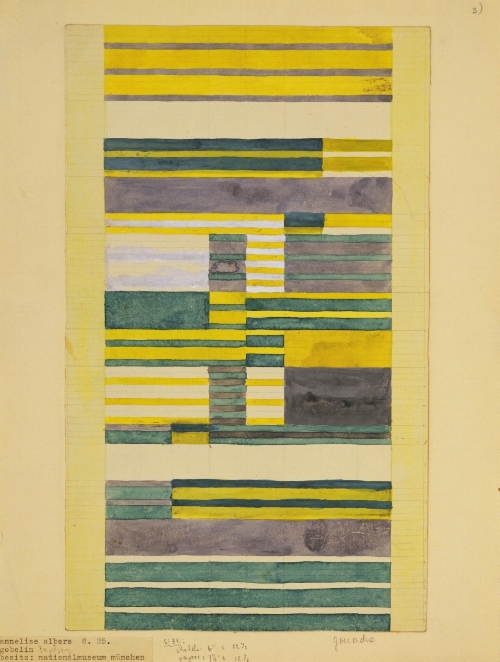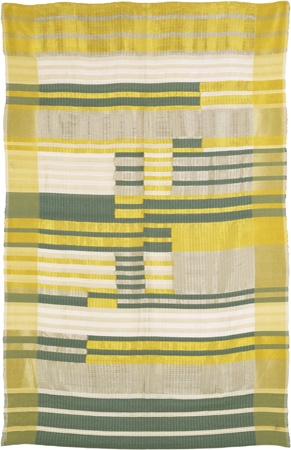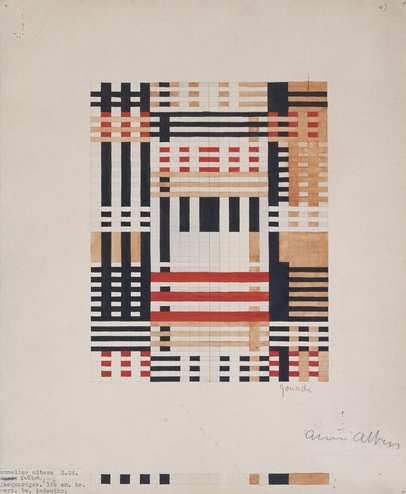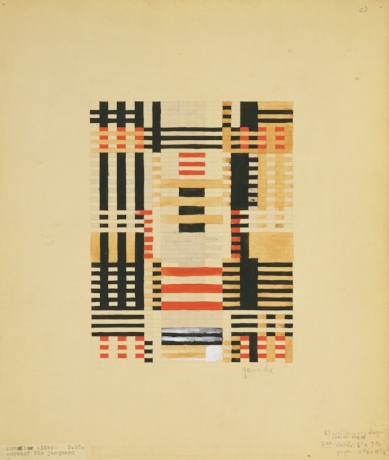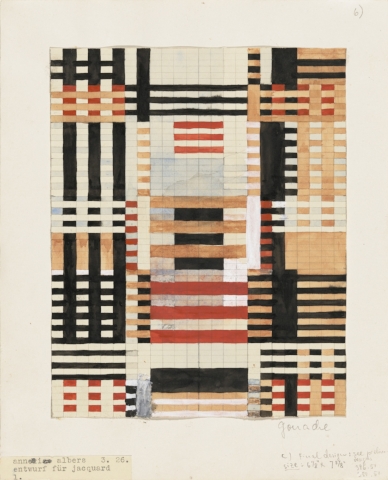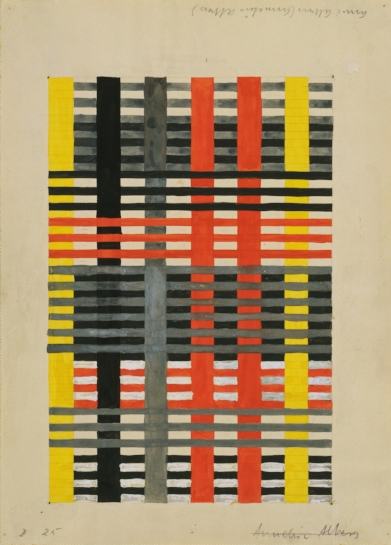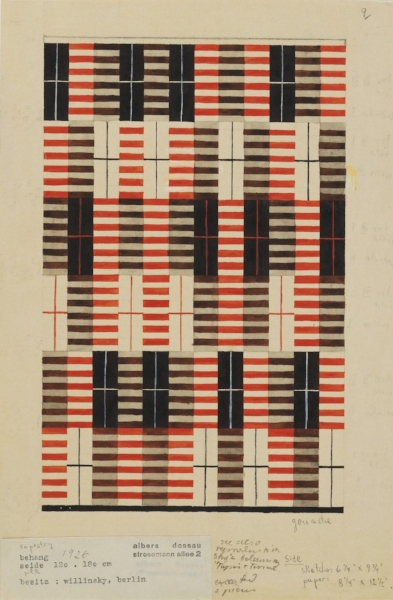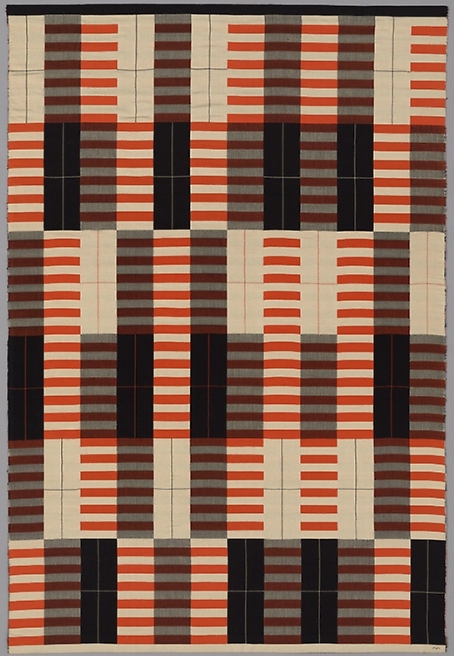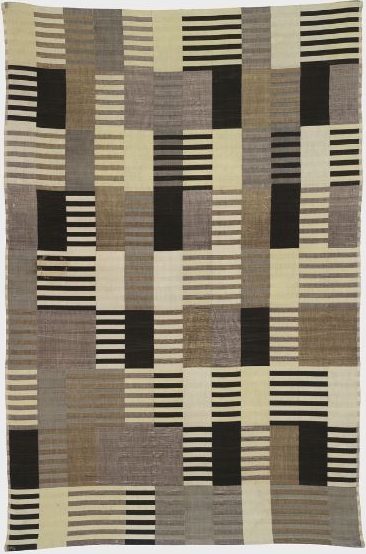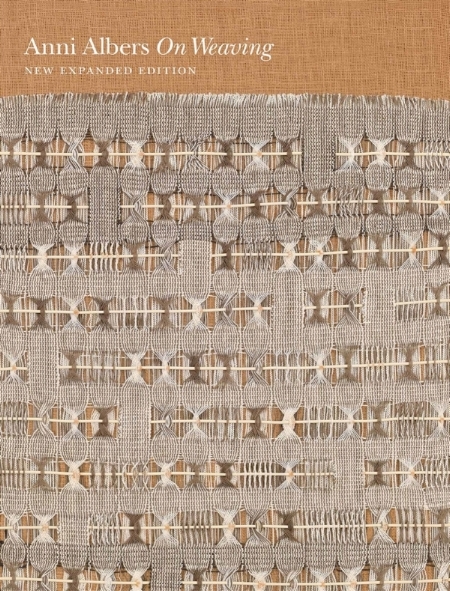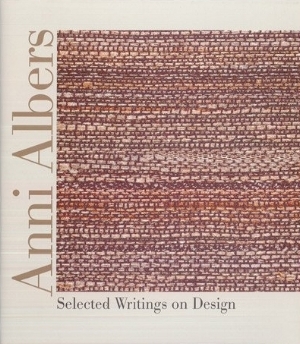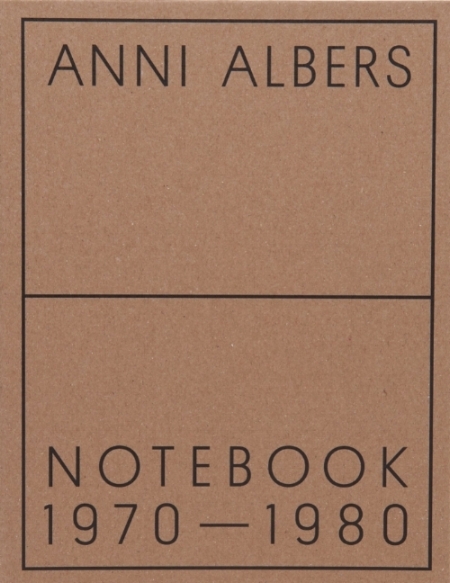Anni Albers: Studies and Weavings
“Art work deals with the problem of a piece of art, but more, it teaches the process of all creating, the shaping out of the shapeless. We learn from it that no picture exists before it is done, no form before it is shaped.” —Anni Albers, “One Aspect of Art Work” (1944)
The Warp and Weft of Process
“The conception of a work gives only its temper, not its consistency.” —Anni Albers, “One Aspect of Art Work” (1944)
Fragments and sketches are not hard to locate within Anni Albers’ body of work. As a weaver, she relied on her watercolor/gouache or marker drafts as preparation for approaching the loom. One can see evidence of planning from them—notations, positioning of color, a system of line and space as shorthand for what may eventually be manifest three-dimensionally.
These “sketches” could frame a discussion of process in the traditional sense: vision, draft, product. But in reading Albers’ essays and transcripts of her lectures, one finds that Albers’ discussion of process places much more emphasis on the doing. Weaving is the process.
In her essay “One Aspect of Art Work,” she distinguishes between imagining the work and finally working on it:
Things take shape in material and in the process of working it, and no imagination is great enough to know before the works are done what they will be like.
Albers held a great reverence for material. It could “take on the burden of what had been brewing in our consciousness or sub-consciousness,” but it also obeyed its own laws (as quoted in “Material as Metaphor”). Not listening to how material exists is to remove oneself from the art. In her own words:
Something speaks to us, a sound, a touch, hardness or softness, it catches us and asks us to be formed. We are finding our language, and as we go along we learn to obey their rules and their limits. We have to obey, and adjust to those demands. Ideas flow from it to us and though we feel to be the creator we are involved in a dialogue with our medium. The more subtly we are tuned to our medium, the more inventive our actions will become. Not listening to it ends in failure. (“Material as Metaphor”)
Listening in this way, of course, does not remove any agency from the creator. In fact, the process reveals more than just a product. Through process “we learn to dare to make a choice, to be independent.” In making a choice, “we develop a standpoint.” And through that dialogue with material, “we learn to trust our intuition” (as quoted in “One Aspect of Art”).
“The Event of a Thread”
“The thoughts [in the book]…can, I believe, be traced back to the event of a thread.” —Anni Albers, from On Weaving (1965)
Subtle changes sometimes appear between her drafts and final product. The drafts below, all produced in 1926, suggest a similar rhythm of line and color that result in two final weavings of the same year.
Weaving is an arduous process, one that requires time and persistence. It is slow and requires great concentration. It is perhaps for this reason that Albers held such reverence for process:
We come to know in art that we do not clearly know where we will arrive in our work, although we set the compass, our vision; that we are led, in going along, by material and work process. We have plans and blueprints, but the finished work is still a surprise. We learn to listen to voices: to the yes or no of our material, our tools, our time. (“One Aspect of Art Work”)
Above all, Albers held a reverence for ideas, for thought that could be embodied by art. In her lecture “Craftsmanship,” she seems to scorn interpretation, the “much discussed, and/or verbalized, art scene.” One gets the feeling that she does not want to sully the wordless process and wordless product with words of analysis, particularly if such ideas do not already resonate from the work. It was to be felt, intuited, seen:
Formed things and thoughts live a life of their own; they radiate a meaning. They need a clear form to give a clear meaning. (“One Aspect of Art Work”)
Her works, images of ideas, are the events of the thread.
*All images by Albers featured in this article are © 2018 The Josef and Anni Albers Foundation / Artists Rights Society (ARS), New York.
Additional Resources
The Josef and Anni Albers Foundation is the main gatekeeper of the Albers collection. The Foundation holds the bulk of Anni Albers’ 1976-1990 papers. They provide a list of additional research facilities related to the Albers. Resources are offered for the general public, researchers, and educators. All essays cited in this article can be located on the Foundation’s website.
The Anni Albers papers, 1924-1969 are located onsite at the Smithsonian Archives of American Art. They were donated by the artist in 1969; little material is digitally accessible.
An audio excerpt and transcript of the original interview can also be found online at the Smithsonian Archives of American Art.
Albers wrote two books: On Designing (1959) and On Weaving (1965). The latter is more easily found. One compilation, Selected Writings on Design, includes various essays from different sources. Anni Albers: Notebook 1970–1980 includes full bleed pages from Albers’ notebook; it gives the sense of holding her actual sketchbook.
*Frontispiece
Anni Albers. Design for Tablecloth (1930). Watercolor and gouache on square-ruled paper. 30.8 x 28.9 cm. Gift of the designer. © 2018 The Josef and Anni Albers Foundation / Artists Rights Society (ARS), New York. Retrieved from Museum of Modern Art.




